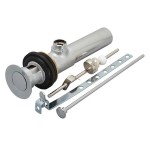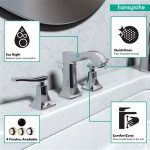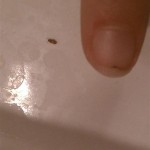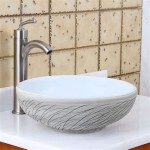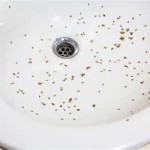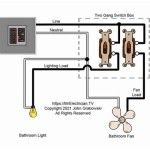How to Stop a Slow Drip in Bathroom Sink
A slow drip in a bathroom sink can be a small annoyance or a major problem. A tiny drip can waste hundreds of gallons of water per year, which can raise your water bill and contribute to environmental waste. A larger drip can damage the sink, the vanity, and the floor, leading to costly repairs. Fortunately, there are a few simple things you can do to stop a slow drip in a bathroom sink.
Most slow drips are caused by one of three problems: a worn washer, a loose packing nut, or a damaged O-ring. The washer is a small rubber or plastic disc that creates a seal between the faucet handle and the body of the faucet. The packing nut is a brass or plastic nut that tightens around the packing, a type of sealant that prevents water from leaking out of the faucet. The O-ring is a rubber ring that creates a seal between the faucet body and the spout. If any of these components is damaged or worn, water can leak out of the faucet, causing a drip.
### Step 1: Identify the cause of the dripThe first step to stopping a slow drip in a bathroom sink is to identify the cause of the drip. To do this, you need to turn off the water supply to the sink and then remove the faucet handle. Once the handle is removed, you will be able to see the washer, the packing nut, and the O-ring. If any of these components is damaged or worn, it will need to be replaced.
### Step 2: Replace the worn componentOnce you have identified the cause of the drip, you can replace the worn component. To replace the washer, simply remove the old washer and replace it with a new one. To replace the packing nut, tighten the nut until the packing is snug against the faucet body. To replace the O-ring, remove the old O-ring and replace it with a new one.
### Step 3: Turn on the water and check for leaksAfter you have replaced the worn component, turn on the water and check for leaks. If there is still a leak, you may need to adjust the packing nut or replace the O-ring again. Repeat this step until there is no more leaking.
### ConclusionStopping a slow drip in a bathroom sink is a simple task that can save you money and prevent damage to your sink, vanity, and floor. By following these steps, you can quickly and easily fix the problem and get your sink back in working order.

How To Unclog A Slow Running Bathroom Sink Drain 10 Options

5 Reasons Your Faucet Is Dripping Water How To Fix It

How To Fix A Dripping Bathroom Faucet

How To Fix A Leaky Faucet 5 Easy Steps

How To Unclog A Slow Running Bathroom Sink Drain 10 Options

12 Ways To Avoid A Leaking Faucet S D Plumbing

5 Reasons Your Faucet Is Dripping Water How To Fix It

Water Dripping From Faucet Why And How To Fix

How To Fix Leaky Quarter Turn Faucets No More Drips Ecohome

5 Things To Try If You Have A Noisy Shower Or Bathroom Sink Drain
Related Posts
